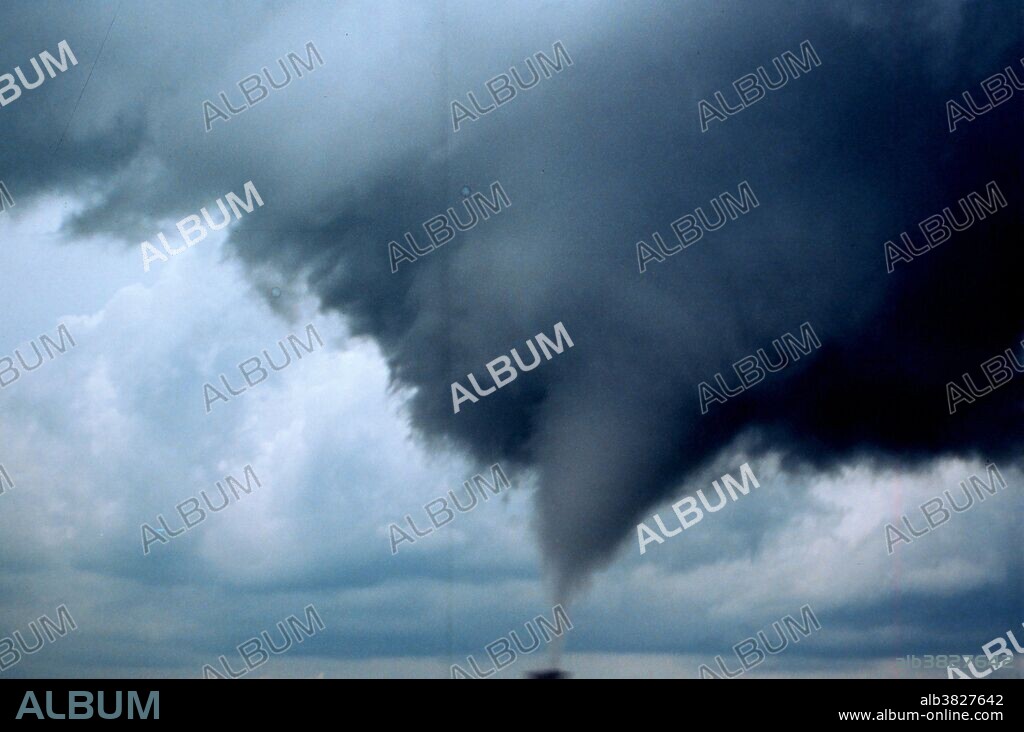alb3827642
Occluded Mesocyclone Tornado Sequence, 1 of 3

|
Añadir a otro lightbox |
|
Añadir a otro lightbox |



¿Ya tienes cuenta? Iniciar sesión
¿No tienes cuenta? Regístrate
Compra esta imagen

Título:
Occluded Mesocyclone Tornado Sequence, 1 of 3
Descripción:
Ver traducción automática
A tornado is a violent, dangerous, rotating column of air that is in contact with both the surface of the earth and a cumulonimbus cloud or, in rare cases, the base of a cumulus cloud. They are often referred to as a twister or a cyclone, although the word cyclone is used in meteorology in a wider sense, to name any closed low pressure circulation. Tornadoes come in many shapes and sizes, but are typically in the form of a visible condensation funnel, whose narrow end touches the earth and is often encircled by a cloud of debris and dust. Most tornadoes have wind speeds less than 110 miles per hour (177 km/h), are approximately 250 feet (80 m) across, and travel a few miles (several kilometers) before dissipating. The most extreme tornadoes can attain wind speeds of more than 300 mph (480 km/h), stretch more than two miles (3 km) across, and stay on the ground for dozens of miles (more than 100 km). Project Vortex-99. An occluded mesocyclone tornado rated an F3 by an NWS damage survey. Occluded means old circulation on a storm; this tornado was forming while the new circulation was beginning to form the tornadoes which preceeded the F5 Oklahoma City tornado. Photo #1 of sequence. Oklahoma, 10 mi. south of Anadarko May 3, 1999.
Crédito:
Album / NOAA/Science Source
Autorizaciones:
Modelo: No - Propiedad: No
¿Preguntas relacionadas con los derechos?
¿Preguntas relacionadas con los derechos?
Tamaño imagen:
1792 x 1188 px | 6.1 MB
Tamaño impresión:
15.2 x 10.1 cm | 6.0 x 4.0 in (300 dpi)
Palabras clave:
AMERICA • AMERICANO • ATMOSFERICO • CIENCIA • CLIMA • ESTADOS UNIDOS DE AMERICA • ESTADOS UNIDOS • METEOROLOGÍA • METEOROLÓGICO • METEREOLOGIA • METEREOLÓGICOS • NATURAL • OKLAHOMA • PRIMERO • SECUENCIA • SERIE • TORMENTA • TORNADOS • VIOLENTOS
 Pinterest
Pinterest Twitter
Twitter Facebook
Facebook Copiar enlace
Copiar enlace Email
Email
